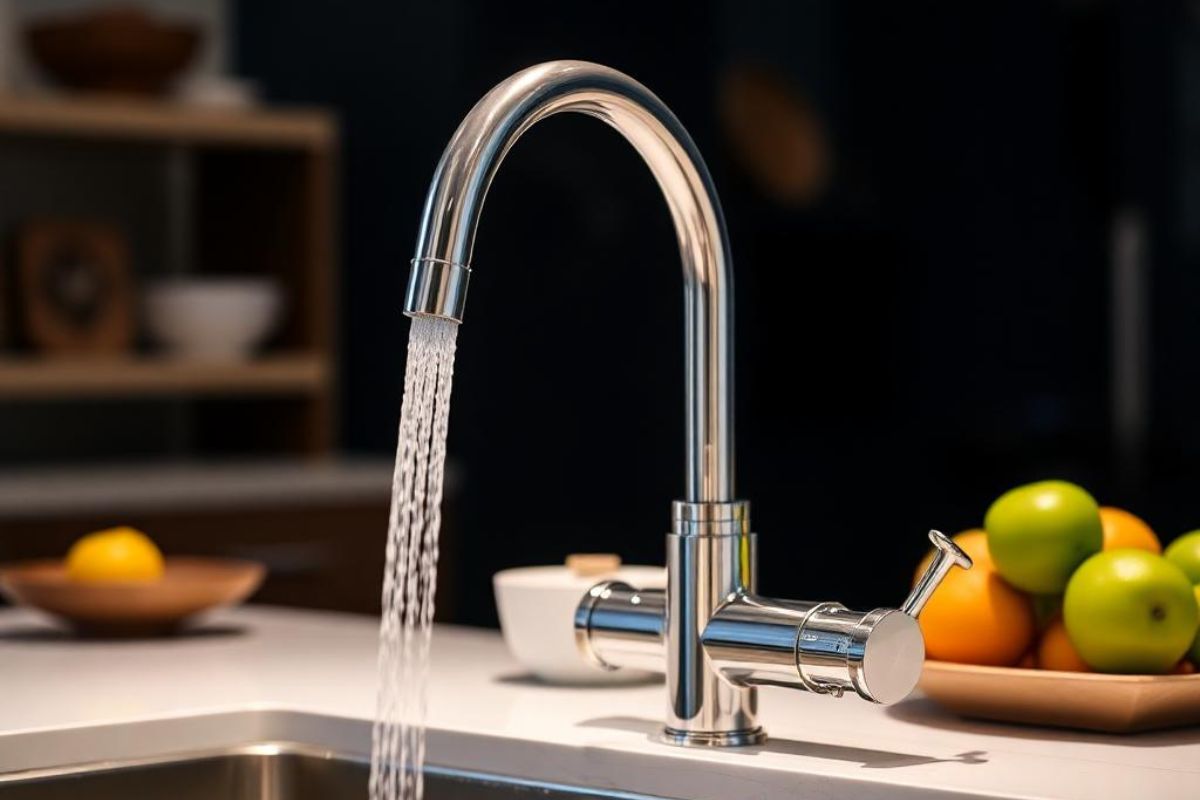How to Remove a Kitchen Faucet: DIY Step-by-Step Instructions
.jpg)
To remove a kitchen faucet, start by gathering tools like wrenches, towels, and a bucket. Turn off the hot and cold water valves under the sink and open the faucet to drain any leftover water. Disconnect the water lines, loosen the mounting nuts underneath, and lift the old faucet straight out. Clean the sink area thoroughly to prep for a new one. If you want extra tips for a smooth installation, the next steps will help you out.
- Turn off the hot and cold water supply valves under the sink and relieve pressure by opening the faucet.
- Disconnect the water supply lines from the faucet using an adjustable wrench, catching any water with a bucket or towel.
- Locate and remove the mounting nuts securing the faucet to the sink using a basin wrench or pliers.
- Lift the old faucet straight up and out of the sink, loosening any sealant or buildup as needed.
- Clean the sink area thoroughly and inspect for damage before installing a new faucet.
Gathering the Necessary Tools and Materials
Before you begin removing your kitchen faucet, make sure you’ve gathered all the essential tools and materials. You’ll need an adjustable wrench, basin wrench, Phillips and flathead screwdrivers, a bucket or small pan, and some old towels or rags. A flashlight can help you see under the sink, especially in dimly lit areas. It’s smart to have penetrating oil handy in case any nuts or bolts are rusted or stuck. Don’t forget a pair of pliers for extra grip and a putty knife if you need to remove caulk or sealant around the faucet base. Gather these items before starting so you won’t have to stop midway. Proper preparation keeps the process smooth and reduces potential frustration as you work.
Turning Off the Water Supply
The first step in removing your kitchen faucet is to shut off the water supply lines under the sink. Look beneath the sink and locate two small shutoff valves—one for hot water, one for cold. Turn each valve clockwise until it stops; this will cut off the water flow to your faucet. If the valves are stuck or hard to turn, use a cloth for extra grip or a pair of pliers, turning gently to avoid damaging the valve. Once both valves are closed, turn on the faucet to release any remaining water and relieve pressure in the lines. Confirm that no water is flowing. Now you’ve stopped the water supply, so you’re ready to move forward with the faucet removal process.
Disconnecting Water Lines and Removing Mounting Nuts
Once you’ve shut off the water supply, grab an adjustable wrench and disconnect the hot and cold water lines from the bottom of the faucet. Turn each nut counterclockwise to loosen them. Keep a small bucket or towel handy to catch any water that drips out. After the lines are free, set them aside so they don’t get in the way.

Next, locate the mounting nuts that secure the faucet to the underside of the sink. Use your adjustable wrench, basin wrench, or a pair of pliers to loosen these nuts. If they're corroded or stuck, apply a penetrating lubricant and let it sit for a few minutes before trying again. Once the nuts are loose, remove them completely and set them aside for disposal.
Lifting Out the Old Faucet
With the mounting nuts removed, you can now lift the old faucet straight up from the sink. Grasp the base of the faucet and pull it gently but firmly. If it feels stuck, wiggle it back and forth to loosen any remaining sealant or mineral buildup. Sometimes, old putty or residue may be holding the faucet in place, so patience helps. If the faucet still won’t budge, use a plastic putty knife to carefully break the seal between the faucet and sink surface. Once it’s free, lift it out completely and set it aside. Take a moment to inspect the sink area for any leftover debris or grime where the faucet sat, as this will help guarantee a clean workspace for the next steps.
Preparing for a New Faucet Installation
Before you install your new faucet, take a few minutes to clean the area around the sink holes thoroughly. Wipe away old putty, grime, and any mineral deposits left behind from the previous faucet. Use a gentle cleanser and a non-abrasive sponge to avoid scratching the sink surface. Check the sink holes for damage or corrosion. If you see rust or rough edges, use fine sandpaper to smooth them out. Verify that your new faucet and all included hardware match the number and arrangement of your sink holes. Lay out all faucet parts and tools within easy reach. Finally, double-check that the water supply lines are in good condition and compatible with your new faucet to guarantee a smooth, leak-free installation process.
Conclusion
You’ve just learned how to remove a kitchen faucet step by step. With the right tools and a bit of patience, you can tackle this project yourself and save on plumbing costs. Remember to turn off the water and protect your workspace. Now that the old faucet’s out, you’re ready to install a new one and upgrade your kitchen. Take your time, follow each step, and you’ll have your new faucet in no time!









